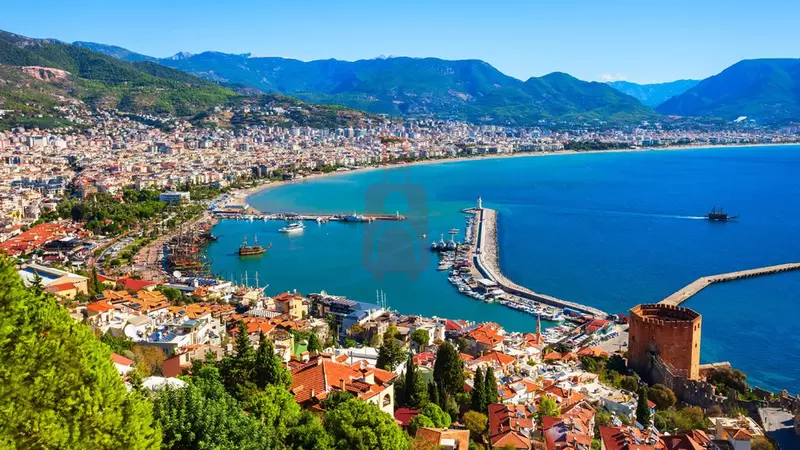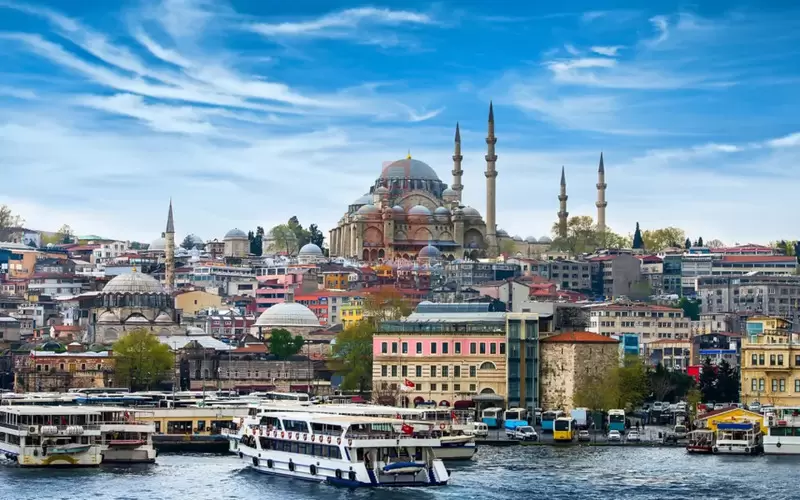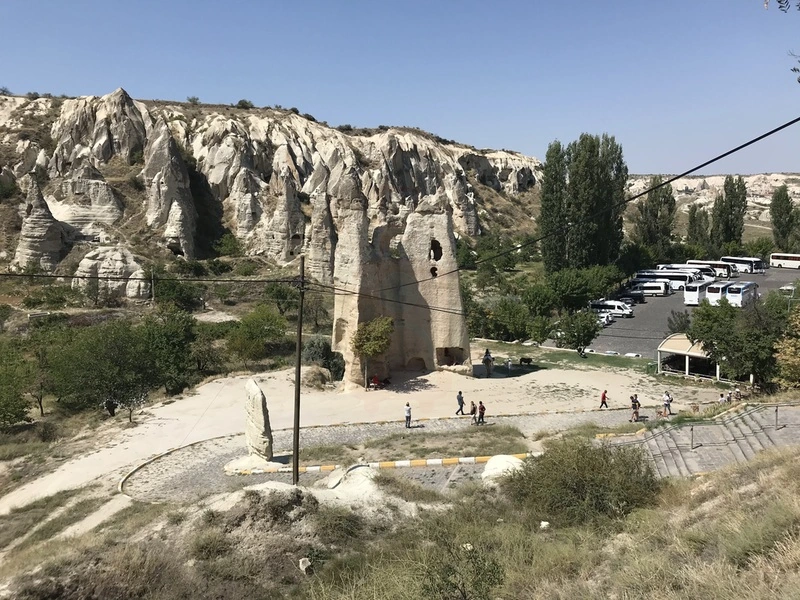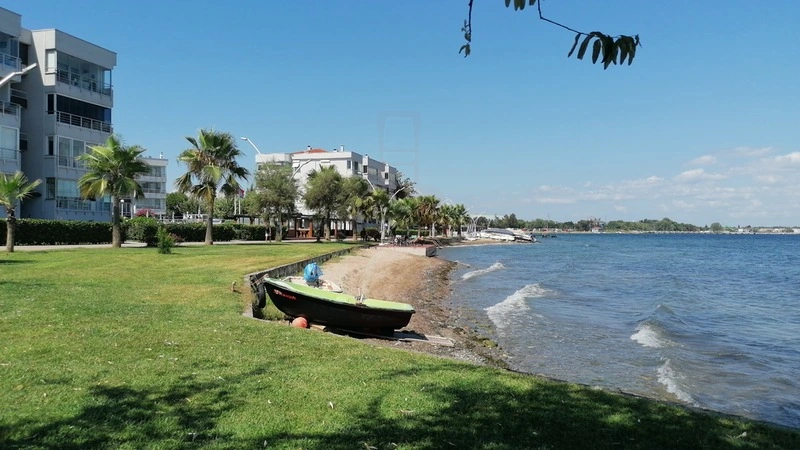Ancient City of Troy
The Ancient City of Troy, located in Çanakkale, Turkey, is a legendary archaeological site that has captivated explorers and historians for centuries. Known as the setting of Homer’s epic "The Iliad," Troy reveals layers of history spanning over 4,000 years. Visitors can explore the ruins of ancient walls, gates, and remnants of a once-thriving civilization. The site provides a glimpse into the mythological and historical significance of this ancient city, blending legend with archaeological discoveries. Surrounded by scenic landscapes, the site also features a replica of the famous Trojan Horse. Troy is a UNESCO World Heritage site that offers an unforgettable journey through time.
Zeugma Ancient City
Zeugma Ancient City, located in southeastern Turkey along the banks of the Euphrates River, is a captivating archaeological site that offers a glimpse into the rich history of the region. Once a thriving city of the ancient Greek and Roman civilizations, Zeugma was an important center of trade, culture, and art. The name Zeugma means bridge or crossing point in Greek, reflecting the city's strategic location as a major crossing point on the Euphrates River. This advantageous position made Zeugma a bustling commercial hub, connecting the eastern and western regions of the Roman Empire.
Yumuktepe Ancient City
Yumuktepe Ancient City, located in the city of Mersin, Turkey, is a fascinating archaeological site that holds great historical significance. Situated on a mound overlooking the Mediterranean Sea, Yumuktepe has a history that spans over 9,000 years, making it one of the oldest inhabited sites in the region. The ancient city of Yumuktepe was first settled during the Neolithic period and continued to be occupied by various civilizations throughout history, including the Hittites, Assyrians, Phoenicians, and Romans. This long history of continuous habitation has resulted in a rich and diverse archaeological record.
Yazılıkaya Ancient City
Yazılıkaya Ancient City, located in the central Anatolian region of modern-day Turkey, is an intriguing archaeological site that holds deep historical and cultural significance. Situated near the city of Hattusa, Yazılıkaya is renowned for its rock-cut sanctuary and its association with the Hittite civilization. Yazılıkaya, meaning inscribed rock, derives its name from the numerous rock reliefs found within the site. These reliefs, carved into the natural rock formations, depict a procession of Hittite deities and figures engaged in religious rituals. The intricately carved reliefs offer valuable insights into the religious beliefs and mythological traditions of the Hittite people.
Xanthos Ancient City
Xanthos Ancient City, located in modern-day Turkey, is a captivating archaeological site that offers a glimpse into the rich history and cultural heritage of the region. Situated in the Antalya Province, Xanthos is renowned for its well-preserved ruins and its significance as a UNESCO World Heritage site. With a history dating back over 3,000 years, Xanthos holds the legacy of various ancient civilizations, including the Lycians, Persians, Greeks, and Romans. The city served as the capital of ancient Lycia and played a vital role in the region's political, economic, and cultural life.
Tyana Ancient City
Tyana Ancient City, located in the Cappadocia region of central Turkey, is a captivating archaeological site steeped in history and mythology. Nestled amidst the scenic landscapes of the Taurus Mountains, Tyana offers visitors a remarkable glimpse into the ancient civilizations that once thrived in the region. With a history dating back thousands of years, Tyana was an important city in ancient Cappadocia. The city flourished during the Hellenistic, Roman, and Byzantine periods, leaving behind a wealth of archaeological remains that showcase its significance.
Tripolis on the Meander Ancient City
Tripolis Ancient City, located in Denizli, Turkey, is a fascinating archaeological site that offers a glimpse into the rich history and cultural heritage of the region. Situated in the southwestern part of the country, Tripolis is believed to have been founded during the Hellenistic period and flourished under Roman rule. As you explore Tripolis, you will encounter a variety of ruins that tell the story of the ancient city. The most prominent feature is the well-preserved theater, which was a central hub for entertainment and communal gatherings. The theater's architecture, with its seating tiers and stage, provides a window into the grandeur and artistic achievements of the ancient city.
Tlos Ancient City
Tlos Ancient City, located in the picturesque province of Muğla in southwestern Turkey, is a remarkable archaeological site that offers a captivating blend of history, mythology, and natural beauty. Nestled amidst the scenic landscapes of the Taurus Mountains, Tlos stands as a testament to the ancient civilizations that once thrived in the region. With a history dating back thousands of years, Tlos holds a prominent place in Greek, Lycian, and Roman mythology. According to ancient tales, Tlos was established by the mythical hero Tlos, who was believed to be the son of the god Apollo. The city flourished during the Lycian period and later became an important Roman settlement.
Termessos Ancient City
Termessos Ancient City is an extraordinary archaeological site located in the Antalya province of Turkey. Nestled amidst the rugged peaks of the Taurus Mountains, Termessos offers a unique combination of ancient ruins and breathtaking natural beauty. This well-preserved city provides an unparalleled glimpse into the history and culture of the ancient world. Historically, Termessos was an important city during the Hellenistic and Roman periods. It was strategically situated on a natural fortress, offering a defensive advantage against potential invaders. The city's location, perched at an altitude of approximately 1,050 meters (3,445 feet) above sea level, made it a challenging target for conquest and contributed to its reputation as an unconquerable city.
Teos Ancient City
Teos Ancient City, located in modern-day Seferihisar in Izmir, Turkey, is a captivating archaeological site that offers a rich blend of history, culture, and natural beauty. With its picturesque coastal setting overlooking the Aegean Sea, Teos presents a unique destination for travelers seeking an immersive experience in ancient Greek civilization. The history of Teos dates back to the 11th century BCE, when it was founded by Ionian Greek settlers. The city flourished during the Greek and Roman periods, becoming a significant center of culture, trade, and intellectual pursuits. Teos was renowned for its thriving port, which facilitated maritime commerce and cultural exchange with other Greek city-states and Eastern Mediterranean civilizations.









